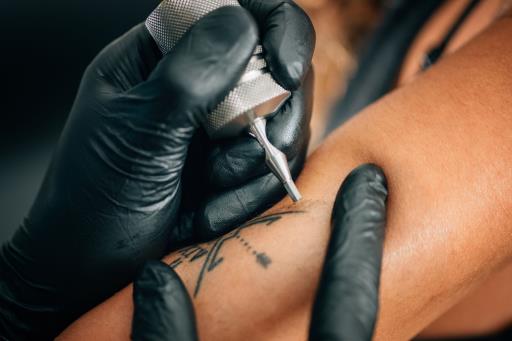For more than simply cosmetic and aesthetic reasons, tattoos can be beneficial. For both cosmetic and medical purposes, medical tattoos are available. If a patient is suffering from a significant medical condition, they can be utilised as an alternative to an alert bracelet. As a technique to make sure the information needed by health providers is constantly accessible, many patients prefer a medical tattoo over wristbands because they are less invasive and less likely to be lost.
What is covered by medical tattoos?
Medical tattooing is a type of tattoo that is used for medical purposes. Patients with medical conditions are often marked with medical tattoos to inform doctors and nurses about their medical condition. Other methods, on the other hand, fall within this category. For example, tattoos are utilised as a guide for administering radiation in breast cancer treatments, which keeps the markings from fading in between treatments. It is not uncommon for medical tattoos to be applied to the breast following a mastectomy to mimic the appearance of a normal breast, such as the areola. Many blemishes and scars can be concealed using a medical tattoo intended to correct skin pigmentation abnormalities caused by surgery. Additionally, state regulations require that practitioners be certified and licenced, and in many situations, the process should be completed with the supervision of a physician.The same process applies for removing the tattoo. Colleagues from Austin laser tattoo removal center suggest that you think twice before doing a tattoo with permanent ink.
Are they permanent?
Permanent medical tattoos are the norm; however, semi-permanent tattoos can be used for patients who don’t require the marking to last perpetually. If the patient no longer needs the medical tattoo, it can be concealed with another tattoo or erased utilising laser tattoo removal treatments. Depending on the requirements, a wide range of inks, including organic and traditional inks, can be used for clinical tattooing. Patients can select their preferred colour from these inks.
What kind of ink is used?
Depending on the intended function, many inks are suitable for medical tattooing. Clients often choose their colours for medical bracelets and other restoration work and use traditional or organic inks. Pigments in traditional inks are created using the following:
- Red is made from mercury
- Lead for yellow, green, or white paint.
- Black from nickel
- For yellow or white, zinc
- Green for chromium
- Cobalt is used to make blue.
- White requires titanium.
- Copper is used for a green or blue pigment
- Barium is used for white
Medical grade tattoo inks should be used for the markers that must be permanently tattooed after radiation treatment. It’s mainly for the radiation work to make sure it’s intact.
The process
Tiny spheres of organic or mineral pigments are injected into the upper layers of the skin during medical micro-pigmentation procedures (dermis). To perform medical tattooing, you’ll need a medical tattoo machine and thinner needles as well as different ink. A topical anaesthetic is applied to the recipient’s treatment region before the surgery, making it virtually painless. Nevertheless, those who don’t want anaesthesia can forgo it if they so want. Most of the time, it takes more than one session to see results. The client will return to the tattooist for more sessions until the entire tattoo is completed. In some cases, regular tattoo pigment touchups may be essential to maintain the inking quality.
Can anyone do medical tattooing?
One of the most popular misconceptions about medical tattooing is that anyone with medical expertise may administer it. Only those who have undergone considerable training in medical tattooing are qualified to do this type of tattooing. Additionally, state regulations require that practitioners be certified and licenced, and in many situations, the process should be completed with the supervision of a physician.
Medical tattoos can serve a variety of objectives, from conveying medical information to boosting a patient’s self-confidence and self-esteem following a medical incident.

